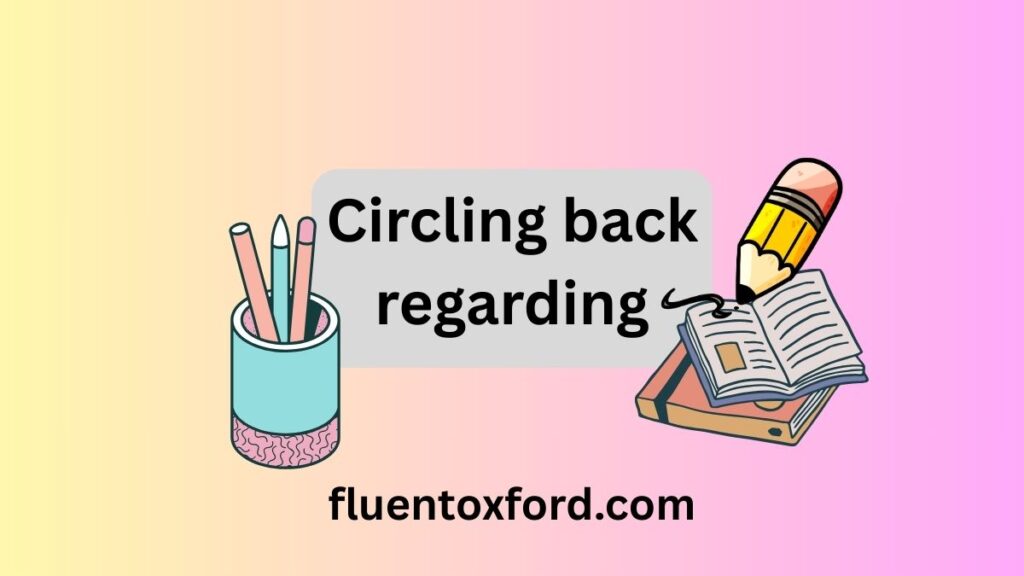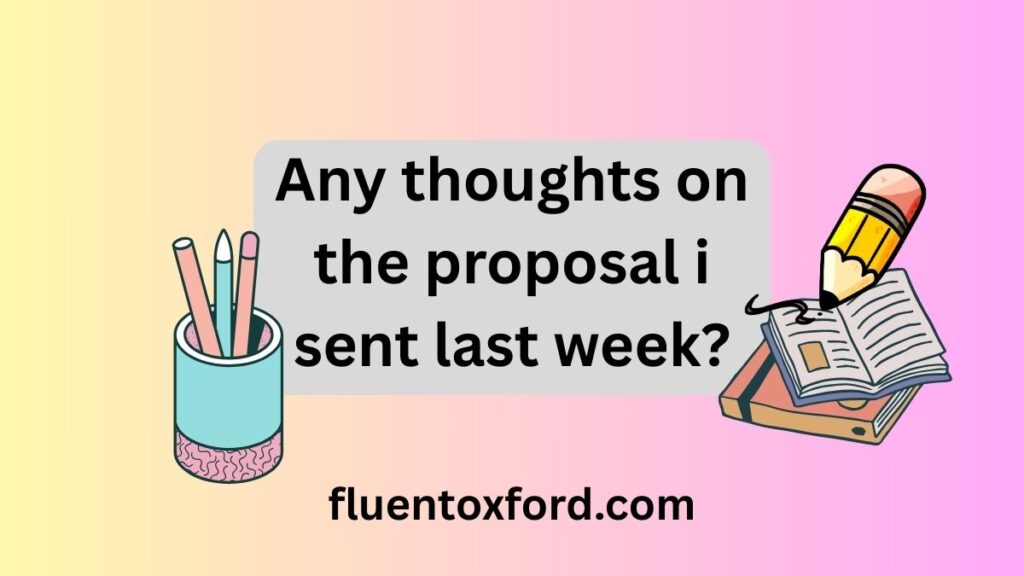25 Other Ways to Say “I Just Wanted to Follow Up” refers to a helpful list of alternative phrases used in professional and casual communication to check in or continue a conversation without sounding repetitive. This phrase is common in emails, especially when reaching out after no response or trying to keep a conversation going. Using different expressions helps avoid sounding too informal or overly persistent, while still showing interest and professionalism.
Words can shape the way others see you. In emails, using more creative and thoughtful language makes you stand out. That’s why having 25 Other Ways to Say “I Just Wanted to Follow Up” can upgrade your messages. It gives your emails a fresh tone, helps maintain a polite voice, and keeps your communication smooth and engaging. A simple change in words can leave a stronger impression.
By learning 25 Other Ways to Say “I Just Wanted to Follow Up”, you gain better control over how you communicate. These phrases allow you to match your tone with your purpose, whether it’s checking in after an interview, reminding someone politely, or following up on a task. Using 25 Other Ways to Say “I Just Wanted to Follow Up” can make your message feel more personalized, respectful, and effective.
Why You Should Stop Saying “I Just Wanted to Follow Up”
Let’s start with this: there’s nothing wrong with the phrase. But it’s been used so often that it’s practically invisible. When your goal is to prompt action, vague or overly familiar language can work against you.
The Problem:
- “Just” makes your message sound hesitant or apologetic.
- “Wanted” softens your intention to the point of being ignored.
- And the whole phrase lacks specificity, making it easy to delay or dismiss.
In high-stakes client engagement, project updates, or time-sensitive situations, your words need to carry weight. That’s where these alternatives come in.
How to Choose the Right Follow-Up Phrase
Before you pick a phrase, ask yourself:
- What’s the intent of this email? (Reminder, nudge, request, clarification?)
- What’s the tone? (Formal, friendly, urgent?)
- Who’s the audience? (Manager, coworker, external partner?)
Each of the alternatives below fits a specific communication context. Let’s explore them.
25 Fresh and Effective Alternatives to “Just Following Up”
Each suggestion includes:
- Best Use Case
- Tone
- Sample Sentence
- Why It Works
Quick check-in on
Casual and effective, this phrase works well internally. It gently reopens conversation and encourages open dialogue without pressure. Ideal for informal status checks or low-stakes project updates among coworkers. Use this when you need a light-touch follow-up. It’s casual, non-intrusive, and perfect for touching base with teammates or clients without sounding overly formal or demanding.
- Use case: Informal project updates or casual team chats
- Tone: Light, friendly
- Example: Quick check-in on the client deck—were you able to take a look?
- Why it works: It’s casual yet direct, and perfect for internal follow-ups.
Circling back regarding

Perfect for professional emails, it suggests persistence without being pushy. Use it to revisit unacknowledged messages and maintain professional communication in scenarios where clarity and action are still needed. A confident phrase that keeps conversations moving. It’s excellent for unresponsive contacts and signals initiative. Helps maintain momentum in collaborative work and complex resource allocation discussions.
- Use case: Revisiting an unanswered email
- Tone: Slightly more formal
- Example: Circling back regarding our discussion on the Q2 budget allocations.
- Why it works: Professional without sounding cold; implies persistence with politeness.
Have you had a chance to look at?
A considerate phrase that gives the recipient space while prompting response. It’s ideal for requesting reviews or decisions without sounding impatient, keeping tone balanced in professional interactions. This soft approach shows patience and understanding while still encouraging action. It suggests empathy for someone’s workload and promotes a supportive, proactive environment in ongoing tasks.
- Use case: Gentle nudge for review or decision
- Tone: Courteous, neutral
- Example: Have you had a chance to look at the contract revisions?
- Why it works: Assumes the best; avoids pressure while asking for action.
Wanted to see if there are any updates on
This expression communicates curiosity and initiative. It signals that progress is being monitored while also respecting the recipient’s timeline. Great for checking on delayed tasks or deliverables. A friendly way to check progress. It shows you’re paying attention to project timelines and value communication without pressuring others. Works well in both internal and client-facing scenarios.
- Use case: When progress is expected
- Tone: Professional, soft
- Example: Wanted to see if there are any updates on the onboarding process.
- Why it works: Shows interest in the timeline without demanding a response.
Following up to keep things moving
Direct and proactive, this version emphasizes project timelines and momentum. Use it when delays are slowing things down and you need action or input to avoid bottlenecks. Great when deadlines loom. This phrase conveys urgency with respect. Use it to prevent projects from stalling and to show leadership in coordinating project updates and key deliverables.
- Use case: When delays are holding back project timelines
- Tone: Proactive, respectful
- Example: Following up to keep things moving on the new hire paperwork.
- Why it works: Implies urgency and action in a positive way.
Just checking in to see how things are progressing…
Useful for long-term or multi-phase projects. It promotes open communication and shows ongoing interest. Keeps communication channels active without sounding demanding or overstepping boundaries. Gentle but clear. It communicates genuine interest in progress, perfect for client updates or team syncs where status checks are part of maintaining alignment and workflow.
- Use case: Mid-project touch base
- Tone: Collaborative
- Example: Just checking in to see how things are progressing on the client proposal.
- Why it works: Encourages open communication while monitoring resource allocation.
Hope everything’s going well—any update on…
Combines empathy with inquiry. This phrase starts with a warm tone, making it great for relationship-building. Use it when you want a response without sacrificing rapport or politeness. Blends warmth with purpose. This opener is effective for maintaining relationships while still prompting action. A great tool in balancing empathy with professional accountability.
- Use case: Soft intro to a status check
- Tone: Empathetic, considerate
- Example: Hope everything’s going well—any update on your end about the invoice?
- Why it works: Blends warmth and professionalism.
Revisiting this thread to bring it back to your attention…
When emails go unanswered, this polite but firm phrase helps bring attention back without seeming accusatory. It’s ideal for reviving conversations in high-volume inboxes or chaotic schedules. Ideal for emails that got buried. This keeps you on their radar without being aggressive, especially in high-volume inbox situations common in executive-level professional communication.
- Use case: Long-forgotten threads
- Tone: Firm but fair
- Example: Revisiting this thread to bring it back to your attention—still waiting on feedback.
- Why it works: Reinforces context; reduces chance of being ignored.
Any thoughts on the proposal I sent last week?

Encourages action while showing interest in the recipient’s opinion. It’s effective in decision-making processes or after sharing documents that need feedback or approval for next steps. Use this to encourage feedback or initiate dialogue on an unanswered pitch. It’s assertive without being too pushy—perfect for decision-makers or stakeholders in client engagement.
- Use case: Decision pending
- Tone: Clear, direct
- Example: Any thoughts on the sponsorship proposal I sent last week?
- Why it works: Invites a response without sounding aggressive.
Wanted to make sure this didn’t get buried…
Light, conversational, and human. It’s great when people are overloaded with emails. This phrase acknowledges that reality and gently brings attention back to your earlier message or question. Playful and relatable, this phrase works wonders in overloaded inbox cultures. It acknowledges reality while prompting action, maintaining professional etiquette with a human touch.
- Use case: When email volume is high
- Tone: Lighthearted, human
- Example: Just wanted to make sure this didn’t get buried—looping back on the creative brief.
- Why it works: Acknowledges inbox chaos while gently nudging.
Just wanted to check the status of…
A standard and versatile phrase. It’s suitable for many business contexts and gently asks for project updates or deliverables while keeping the tone neutral and unobtrusive. Simple and effective for ongoing tasks. This neutral tone works across industries, especially for follow-ups that need to happen regularly, like in agile teams or vendor relationships.
- Use case: Progress request
- Tone: Polite, standard
- Example: Just wanted to check the status of the updated scope document.
- Why it works: Still effective if not overused.
Following up on our last conversation about…
Anchors your message in previous dialogue, making it harder to ignore. Use this when trying to maintain continuity in client engagement or ongoing professional communication threads. This reminds them you’ve already discussed the issue. It reinforces the idea that you’re waiting on action. Great for reinforcing continuity in long-term professional interactions.
- Use case: Keeping professional interactions alive
- Tone: Neutral, formal
- Example: Following up on our last conversation about the marketing schedule.
- Why it works: Anchors the message to a prior discussion for context.
Is there anything else you need from me to move forward?
This line flips the focus and offers support. It’s useful for unblocking delays and shows your commitment to collaboration opportunities and resource allocation resolution. Shows initiative and removes blockers. Perfect when a lack of progress might be due to missing information, signaling you’re invested in the outcome and value effective communication.
- Use case: Removing blockers
- Tone: Supportive, solution-focused
- Example: Is there anything else you need from me to move forward with the contract?
- Why it works: Promotes a proactive environment and collaboration.
Hope this finds you well—any movement on…
A polite and timeless opener, this phrase softens the follow-up while signaling that progress is needed. Best used in formal or semi-formal environments with external stakeholders. A softer prompt that’s great for external contacts. Use it when you’re unsure of someone’s bandwidth and want to nudge gently without disrupting the flow of collaboration opportunities.
- Use case: Courteous request
- Tone: Formal yet warm
- Example: Hope this finds you well—any movement on the creative direction we discussed?
- Why it works: Timeless opener, subtly invites action.
Let me know if there’s a better time to reconnect.
Respect the other person’s schedule while reinforcing your intent to follow through. Works well in proactive environments and keeps dialogue going without applying too much pressure. Flexible and respectful of others’ time. This phrase keeps the door open and suggests you’re adaptable—perfect for partners, prospects, or clients in busy periods.
- Use case: Low-pressure follow-up
- Tone: Flexible, professional
- Example: Let me know if there’s a better time to reconnect about the product demo.
- Why it works: Shows respect for the recipient’s time.
Following up to explore collaboration opportunities.
Perfect for networking or partnerships. Shows you’re interested in mutual benefit and leaves room for further dialogue. It’s respectful, forward-thinking, and sparks professional interactions. Focused on possibility, not pressure. Great for networking or pitching ideas. Use this in BD or outreach to suggest shared goals and uncover new ways to work together.
- Use case: New contact, networking
- Tone: Forward-thinking, professional
- Example: Following up to explore collaboration opportunities between our teams.
- Why it works: Opens doors for professional communication and partnerships.
Checking in to align on next steps.
Great for team settings or client coordination. It shows initiative while inviting input, making it easier to agree on tasks and timelines for joint project updates. When progress is shared, but direction is unclear—this helps bring focus. It’s proactive and lets your team or client know you’re thinking strategically about outcomes.
- Use case: Project planning or review
- Tone: Strategic, polite
- Example: Checking in to align on next steps for the client onboarding process.
- Why it works: Clarity and purpose, ideal for project management.
Looping back on this—do you have a moment this week?
Incorporates a time-based nudge. Great for scheduling discussions or meetings. It emphasizes availability and keeps the conversation alive with a clear call to action. Adds urgency and time-specific clarity. This is perfect when you want to shift the conversation to a call, helping turn digital talk into real professional interactions.
- Use case: Meeting coordination
- Tone: Conversational
- Example: Looping back on this—do you have a moment this week to review?
- Why it works: Encourages scheduling with soft urgency.
Do you have any feedback on?

Encourages engagement without pressure. A go-to for requesting reactions, reviews, or approvals on shared work. It shows you’re open to input and value effective communication. Keeps things constructive and collaborative. This invites others to speak and shows you’re not just waiting passively but actively building on their input to move forward.
- Use case: After delivering a document or idea
- Tone: Constructive
- Example: Do you have any feedback on the Q1 summary draft?
- Why it works: Opens the door for input.
I’d love to hear your thoughts on…
Inviting and engaging. This phrase makes the conversation feel collaborative. It’s perfect for creative projects or early-stage pitches where feedback is essential to move forward. More conversational and engaging. This line makes it feel like a two-way exchange and is especially useful in creative industries or when nurturing client engagement.
- Use case: Engaging decision-makers
- Tone: Inviting
- Example: I’d love to hear your thoughts on the training outline.
- Why it works: Puts the recipient’s opinion at the center.
Wanted to reconnect and check where things stand.
Neutral and professional. It’s well-suited for older threads or when timelines have slipped. Encourages a reset or refresh in communication without casting blame. Works for long-paused projects. This phrase helps you pick up where things left off without needing to rehash old details—great for long-term clients or strategic discussions.
- Use case: Delayed replies
- Tone: Casual but clear
- Example: Wanted to reconnect and check where things stand on the partnership discussion.
- Why it works: Keeps tone light while requesting clarity.
Any chance you’ve had time to review this?
Soft and respectful, this phrase shows understanding of the recipient’s busy schedule. It works well when following up with higher-level contacts or decision-makers. Respectful of people’s time while requesting a clear action. This approach works well when you’re managing stakeholders who often have conflicting priorities and heavy schedules.
- Use case: Busy stakeholders
- Tone: Understanding
- Example: Any chance you’ve had time to review the estimate?
- Why it works: Empathizes with their schedule.
Let’s touch base—does Thursday work for you?
Encourages planning and adds specificity. It’s a great follow-up when you need to coordinate a discussion. The friendly tone also keeps the conversation feeling natural. Suggests a clear next action and takes initiative. Useful for project planning or status updates when you need a definitive meeting or conversation to proceed efficiently.
- Use case: Scheduling
- Tone: Proactive
- Example: Let’s touch base—does Thursday work for you to go over the report?
- Why it works: Suggests a specific next step.
I’m following up as promised regarding…
Shows reliability and accountability. This phrase is ideal for maintaining trust in your professional communication, especially when you committed to circle back at a certain time. Builds trust by showing you’re reliable. Ideal when you’ve committed to revisit a topic and want to reinforce your professionalism in time-sensitive conversations.
- Use case: Accountability
- Tone: Reliable, consistent
- Example: I’m following up as promised regarding the signed agreement.
- Why it works: Shows follow-through.
Checking to see if we’re still aligned on…
Perfect for clarifying project timelines or deliverables. Use it to confirm shared understanding and prevent miscommunication during longer engagements or multi-step processes. A good way to catch miscommunication early. Helps ensure everyone is still heading in the same direction—especially important during scope changes, new resource allocations, or leadership turnover.
- Use case: Expectations management
- Tone: Clarifying
- Example: Checking to see if we’re still aligned on the delivery timeline.
- Why it works: Encourages recalibration if needed.
Conclusion
In professional communication, it’s important to sound polite, clear, and confident. Using the same phrase over and over, like “I just wanted to follow up,” can feel dull or too casual. That’s why learning the 25 Other Ways to Say “I Just Wanted to Follow Up” is so helpful. These phrases can make your message more interesting and respectful. They also show that you care about good communication.
Whether you’re emailing a manager, a client, or someone new, variety in your words makes a big difference. The 25 Other Ways to Say “I Just Wanted to Follow Up” give you better ways to express yourself. They help you sound professional while still being kind. With these options, you can follow up in a smarter, more thoughtful way every time.
FAQs
Q1: Why should I stop saying “Just following up” in emails?
It’s overused and often sounds passive. Using varied, action-oriented language improves clarity, boosts response rates, and strengthens your professional communication tone.
Q2: What’s the best follow-up phrase for busy professionals?
Use “Just checking in to see how things are progressing…” or “Any chance you’ve had time to review this?”—both respect time and gently prompt action.
Q3: How often should I follow up on unanswered emails?
Wait 2–3 business days after your first message. If still no reply, follow up once weekly for 2–3 weeks max—after that, reassess the opportunity.
Q4: Are these phrases suitable for cold outreach or sales?
Yes. Especially phrases like “Following up to explore collaboration opportunities” or “Let me know if there’s a better time to reconnect.” They work well in sales, partnerships, and lead generation.
Q5: What’s a polite way to follow up without sounding pushy?
Use warm, clear language like “Hope this finds you well—any movement on…” or “Revisiting this thread to bring it back to your attention.” These balance politeness with professionalism.

As an admin at Fluent Oxford, Maida Queen is the driving force behind our vibrant learning community. With a deep passion for English language education, she ensures that our platform remains a dynamic, engaging, and supportive space for learners worldwide.
Maida expertly manages content, assists users with their grammar and fluency queries, and fosters an interactive environment where learning feels effortless and enjoyable. Whether you need guidance, motivation, or just a friendly face in the Fluent Oxford community, Maida is always there to help you reach your English language goals.








